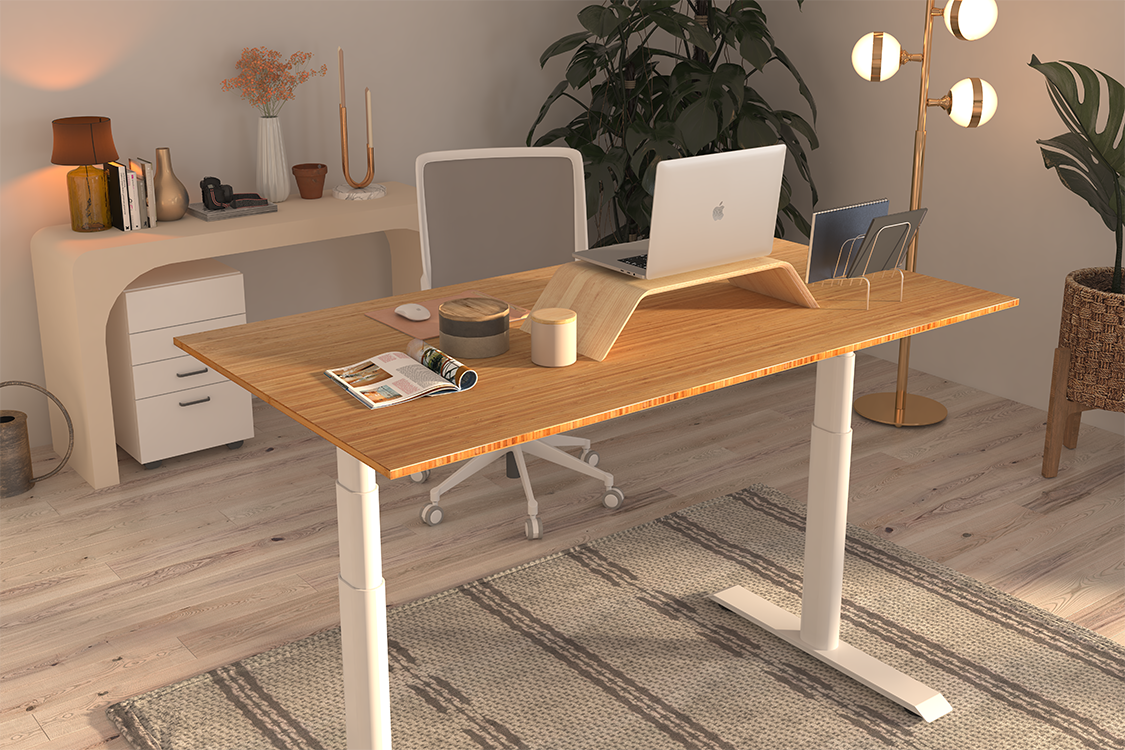There are many different types of desks used in offices all over the world. They are made from different materials and have vastly differing designs but they are all meant to encourage productivity in office workers and ensure that they can do their jobs efficiently. We have listed a few of the common types of desk that you may see in either a corporate or home office in the UK.
6 Different Types of Office Desk
Pedestal Desk
This type of desk traditionally has a set of drawers balanced on short legs on either side of a gap for the employee to sit at. This is very common in offices where storage is a priority and where individual employees need to store either their own equipment or paper files that they are working on for the company. Most pedestal desks have at least one file drawer, if not two, though as paper filing is becoming rarer, this may soon be a thing of the past. A pedestal desk is an efficient solution and the desks often have a three quarter length modesty panel on the other side to provide visual privacy to the employee working there.
Height Adjustable Desk

An increasingly common feature in office environments is a height-adjustable desk. These desks are sometimes referred to as standing desks and they are a more ergonomic solution than sitting in a chair all day. They allow employees to adjust the height of their desk so they are able to stand up at it and work from a comfortable standing height. This is something that is becoming increasingly popular as the health benefits of this type of desk becomes more widely acknowledged.
Standing desks can improve posture and dramatically reduce back pain that is related to office work. They are an easy way to increase workplace productivity as well as blood circulation increases when we are standing up for a sustained period of time. This means that workers are more alert and capable of concentrating on the work in front of them, and this can make a real difference to the whole performance of a team.
Writing Desk
This type of desk generally has a large work surface and is supported by legs like a regular table. There are also typically some small drawers on the underside for pencils etc, but no pedestals or file drawers. This allows the employee to move freely around the desk, cather than being confined to the middle as with a pedestal desk and they have a large work surface for spreading out reference materials and files so they can complete their work.
Computer Desk
These desks are generally smaller than most other types of desk on the list as they are optimised for housing a computer rather than for paper-based tasks. They may have a pedestal at one side and possibly a file drawer for the employee's paperwork to go in. They will often have a keyboard tray on the underside of the desk and this can also be used to store small items of stationery. As they tend to be a bit smaller than the other types of desk, they tend to be suited for smaller offices or homes without a lot of space.
Executive Desk
An executive desk tends to look like a much larger pedestal desk, with more depth, to give a greater surface area, but also to put more space between the person behind the desk and anyone on the other side. It is a way of establishing authority, hence the name. The pedestals on either side tend to reach the ground and there are generally file drawers on either side of the space in the middle, which tends to be ample, so that the executive has a decent amount of room to stretch their legs. The modesty panel also tends to reach down to the floor, unlike the smaller pedestal desks when it tends to be half or three quarter length.
Return Desk or L Desk
This tends to be made up of a main desk and an additional one, which gives more area to work from and is positioned at a perpendicular angle to the first. It means that the employee has a 90 degree angle of swivel to reach their full desk complement and can use the secondary desk to house a printer or in and out trays, as required. This can be an excellent space saving setup and they vary in the number of pedestals and legs that they have. Some have one pedestal, some have two and some have none at all. They are very versatile and tend to be modular in nature, which allows them to be positioned to the best advantage of the user.